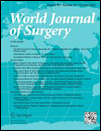Animation Supported Consent Before Elective Laparoscopic Cholecystectomy
Supplementary Information: The online version contains supplementary material available at https://doi.org/10.1007/s00268-022-06628-4.
Abstract
Background
Patient understanding of surgical procedures is often incomplete at the time they are performed, invalidating consent, and exposing healthcare providers to complaints and claims of failure to inform. Remote consultations, language barriers and patient factors can hinder an effective consent pathway. New approaches are needed to support communication and shared decision-making.
Methods
Multi-language digital animations explaining laparoscopic cholecystectomy were introduced at The Royal London Hospital for patients who attended for elective surgery (www.explainmyprocedure.com/lapchole). Patients completed questionnaires on the day of their procedure both before and after introduction of the animations. We assessed patient-reported understanding of the procedure, its intended benefits, the possible risks, and alternatives to treatment in 72 consecutive patients, 37 before (no animation group) and after 35 after introducing the animations into the consent pathway (animation group). Patient understanding in the two groups was compared.
Results
The two groups were well matched in respect of age, sex and whether English was their first spoken language. The proportions of patients who reported they completely understood the procedure, its benefits, risks, and alternatives in the no animation group were 54, 57, 38 and 24% and in the animation group, 91, 91, 74 and 77%, respectively; p < 0.01 for each comparison.
Conclusion
The integration of multi-language laparoscopic cholecystectomy video animations into the patient consent pathway was associated with substantial improvement in reported understanding of the procedure, benefits, risks, and alternatives to treatment. This approach can be applied across all surgical disciplines in a standardised manner in an era of accelerated elective work and remote consultations.




